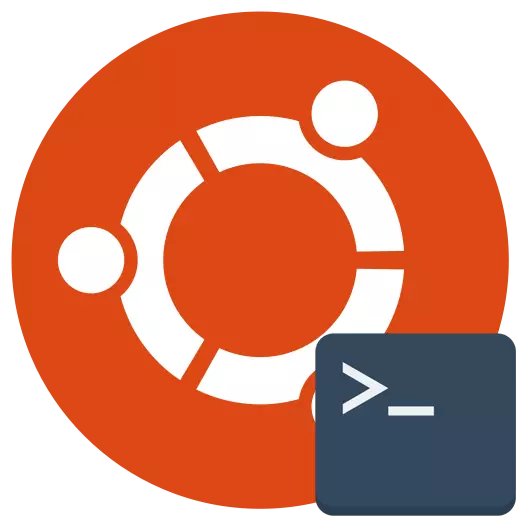
Console is the main tool for distributions based on the Linux kernel. Through it, users perform many useful commands that allow you to interact with the operating system. Most of the users adhere to one terminal launch methodology, although in fact the variations are much more. We offer to familiarize yourself with all available options for the completed task so that you can find optimal or at least learned about the presence of alternative ways that can once come in handy.
Run "Terminal" in Linux
Absolutely each method of launching the "Terminal" in any of the Linux distributions does not take much time, and most often it is literally in several clicks. Today, we consider Ubuntu as an example. If you have another OS, do not worry, because there is almost anywhere any differences, and if they are available, then the most minimal, and we will definitely tell about them in the methods.Method 1: Standard key combination
In Linux, as in all operating systems, there are a number of hot keys responsible for the quick call for certain options. This includes the launch of the default console. However, some users may encounter the fact that standard combinations for some reason do not work or moved. Then we first advise you to make the following actions:
- Open the main menu on the taskbar and go to the "Settings" section.
- Here you are interested in the category "Keyboard", which is listed on the left pane.
- Run down into the "Start Application" group and find the "Open Terminal" line there. By default, the combination must have a view of Ctrl + Alt + T. If it is not configured or you want to change it, just double click on the left mouse button on this line.
- You will be notified of the need to introduce a new combination to change the "Open Terminal" parameter. If you change your mind to enter the keys, simply click on the ESC.
- Relieve the settings if you want to return all default values.
- It remains only to hold the appropriate combination to check the effectiveness of the option.
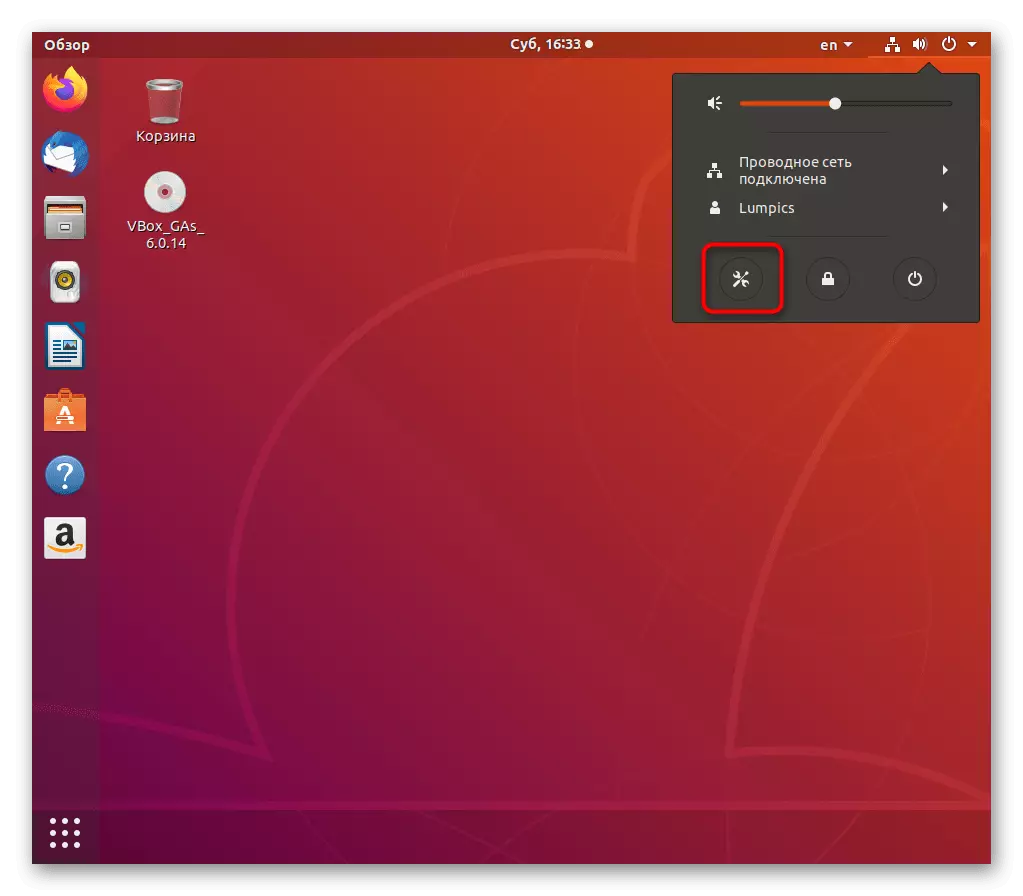


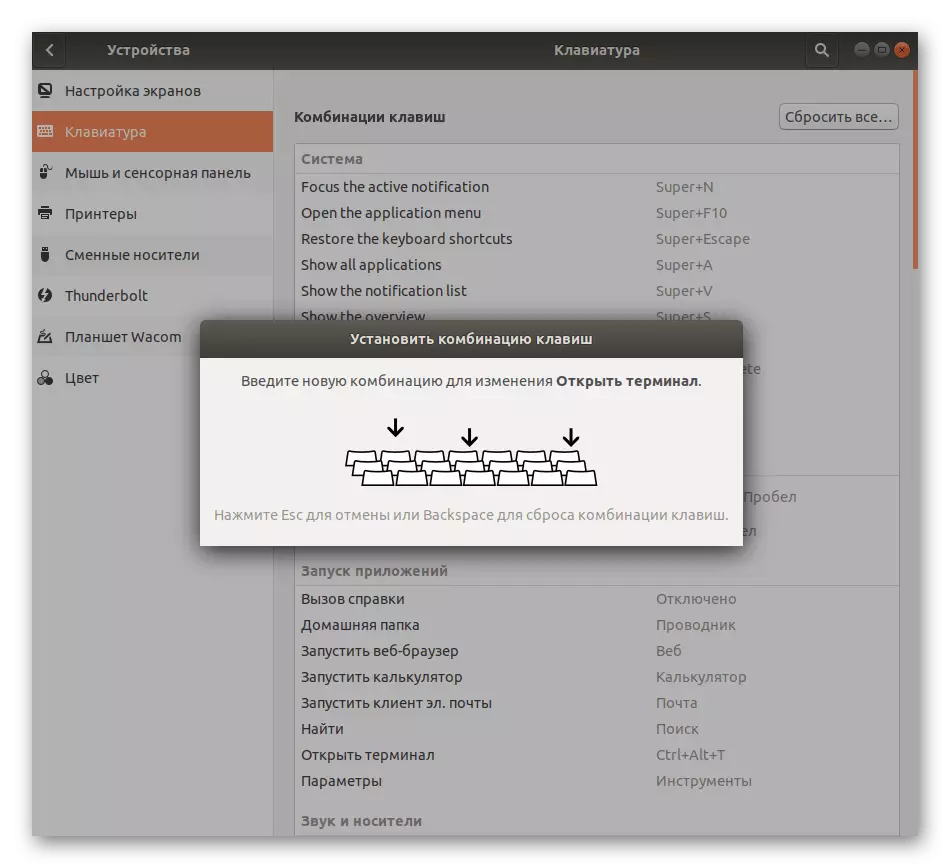


Now you know how to start a console with just one combination. At the same time, be careful during the reassignment of combinations, because some combinations are already busy, which you will be notified. In this way, you can open an unlimited number of new windows of the classic "Terminal".
Method 2: Utility "Run"
The ability to apply this method depends on the established environment. In almost all familiar graphic shells, it functions correctly, so it must be tried. The principle is to call the utility to "execute", which is carried out by clamping the combination Alt + F2.
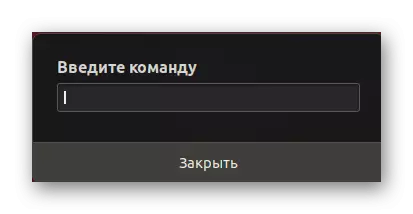
In the string that appears, it will be enough to enter GNOME-Terminal or Konsole, which depends on the type of shell used.
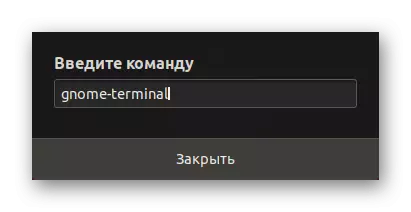
After that, you will see how the new terminal window will immediately appear.
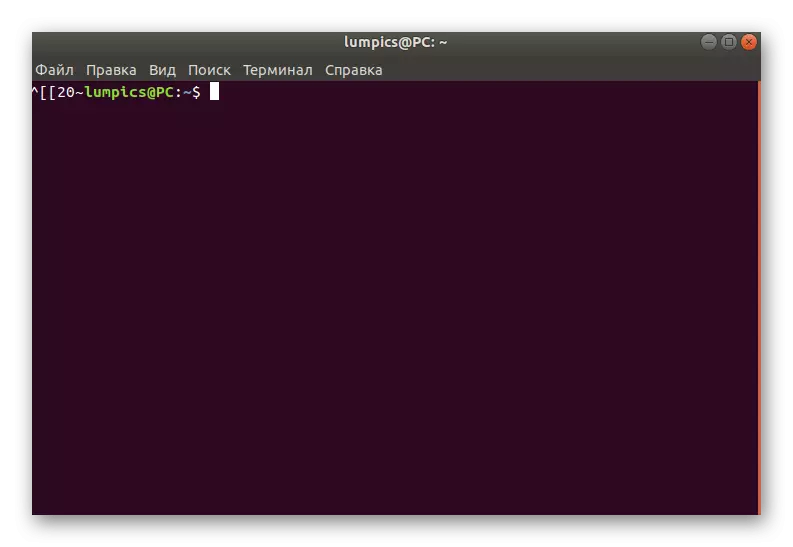
The disadvantage of this method is that you will have to remember a special command or copy it every time to call. However, as you can see, there is nothing complicated, so it's already literally after a couple of inputs, you can easily remember the necessary phrase.
Method 3: Director's context menu
Most graphic shells have a context menu that is called by pressing PCMs at a free place in any directory. One of the items is called "Open in the Terminal" or "Open Terminal". This is what we recommend using the console as a separate way. This is especially true in cases where you want to run a new console in the required location.

Method 4: The main menu of the OS
The structure of almost all environments ensures that the main application menu, where you can run the installed and standard programs, including the console. Open the main menu convenient for you and find the "Terminal" there. If you just find it fails, use the search bar. Click the LCM to start, and now you can safely begin to fit commands. If you need to create a new session, go back to the main menu and do the same actions.

Method 5: Virtual Console
This option is not suitable for not all users, since it is used exclusively for the transition between virtual system consoles. The fact is that when the operating system starts, there are integer seven such command lines, the last of them implements the graphic shell, so the user sees only it. If necessary, you can switch to other terminals using the hot keys Ctrl + Alt + F1 / Ctrl + Alt + F6.

For authorization, you will need to enter a login first, and then password. Note that the superuser key will not be displayed for security purposes, this you need to know if at least once used the Sudo command that starts certain actions on behalf of an account with increased privileges.

You will be notified that authorization in Ubuntu is performed successfully. Several important lines are displayed, where there is a general description and references to the official documentation and pages support. Now you can use commands to control the console. Upon completion, enter EXIT to exit, and then switch to the graphics shell via Ctrl + Alt + F7.
We clarify that there is a huge number of auxiliary teams, as well as certain features that should be aware of virtual consoles. We recommend that we read this entire information by reading the official Ubuntu documentation by using the reference below.
Jump to reading the official documentation Ubuntu on the official website
Method 6: Row "Favorites"
Windows users prefer to consolidate important applications on the taskbar to quickly run them at the required moment. In the graphic shells of Linux, this feature is also implemented, but the string itself is called "Favorites". If the "Terminal" is initially absent there, we propose to add it as follows:
- Open the main menu and find the console there. Click on it right-click.
- In the context menu that appears, use the "Add to Favorites" string.
- After that you will see that the console has been added to the appropriate panel. If necessary, you can put several icons there.
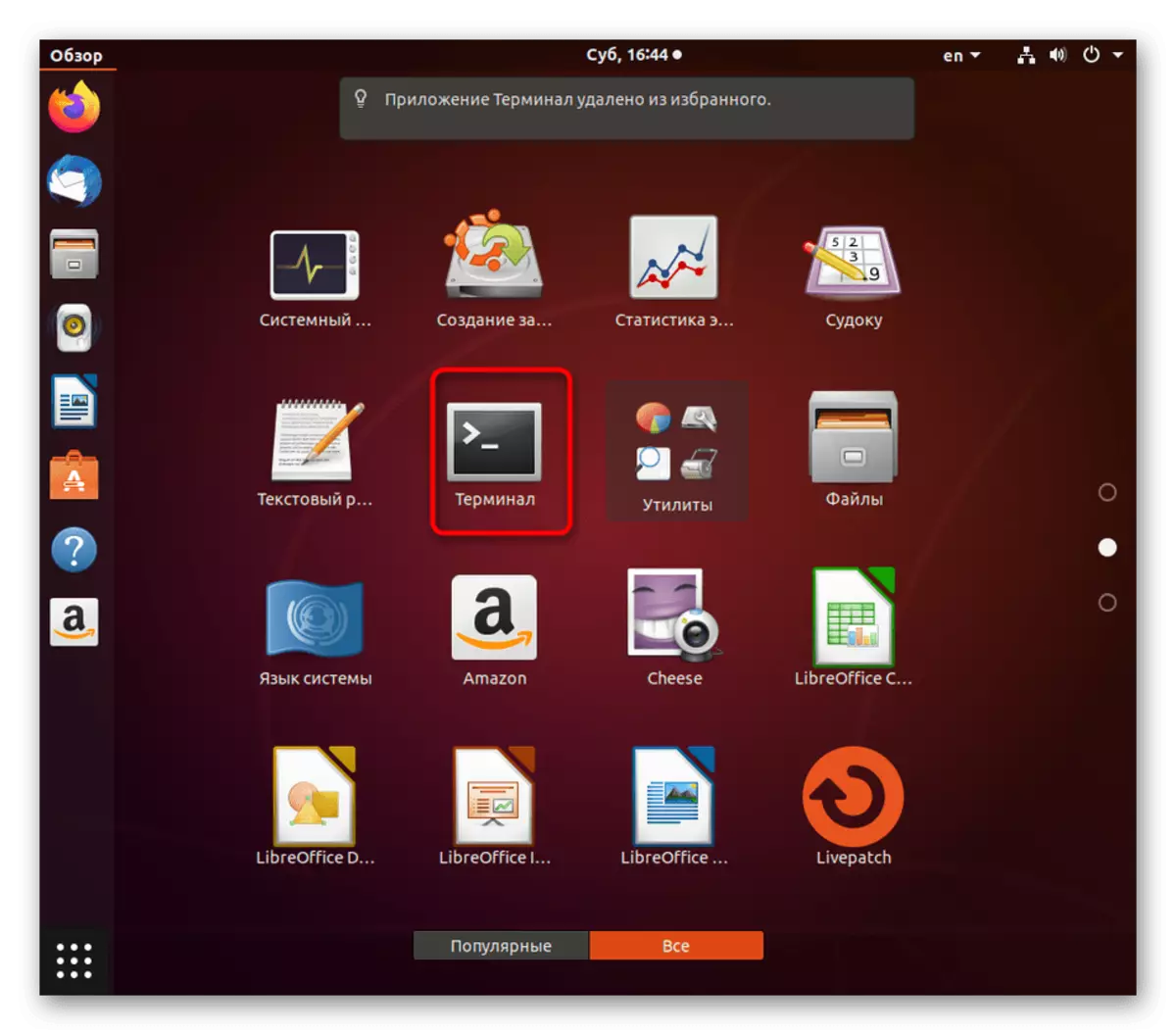
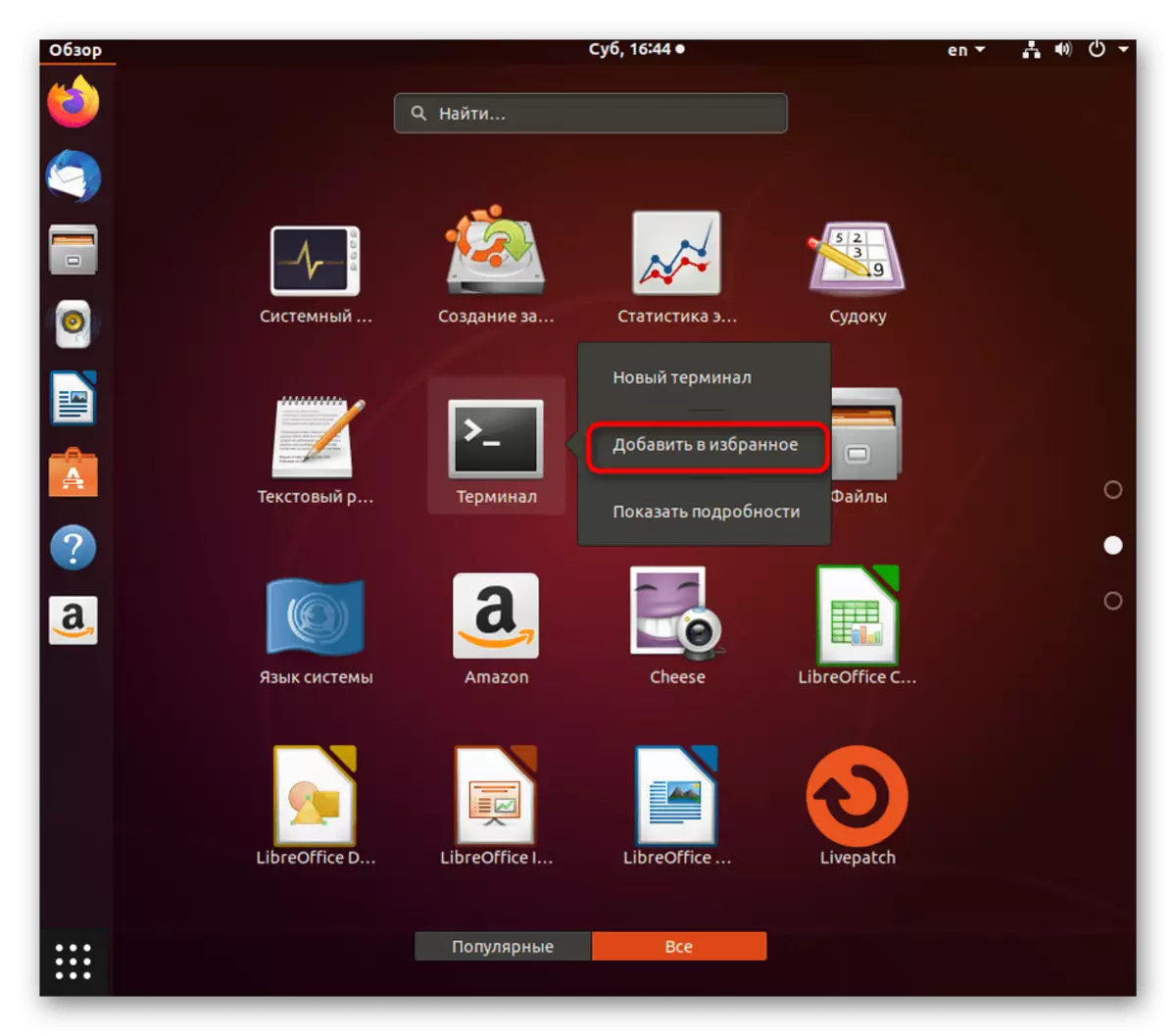
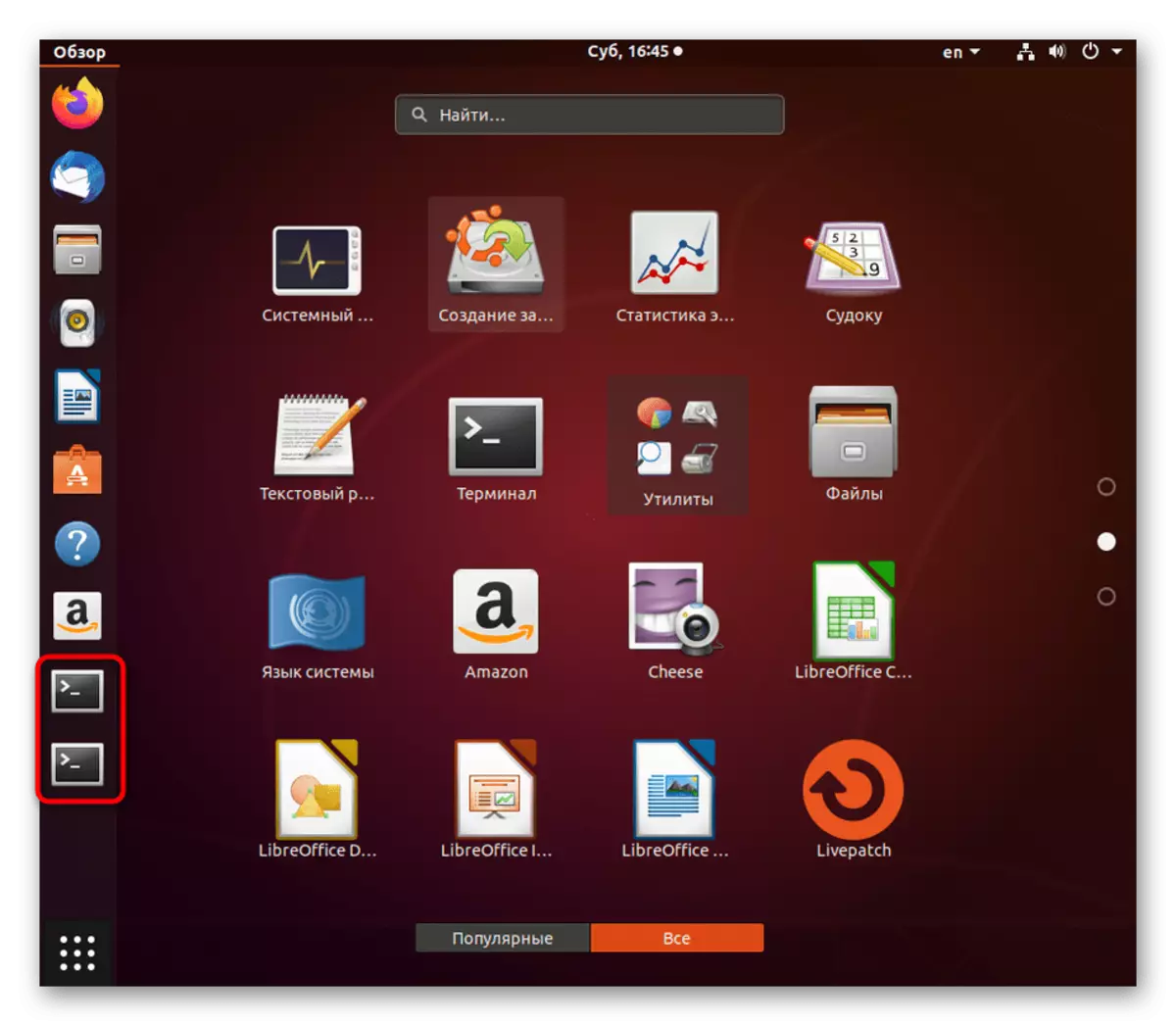
These were all possible methods for launching the standard console in Linux. Check out the instructions to choose the best option for yourself. Note that if you use the user terminal installed separately, the opening method may be different. Be sure to read this information in the official documentation.
